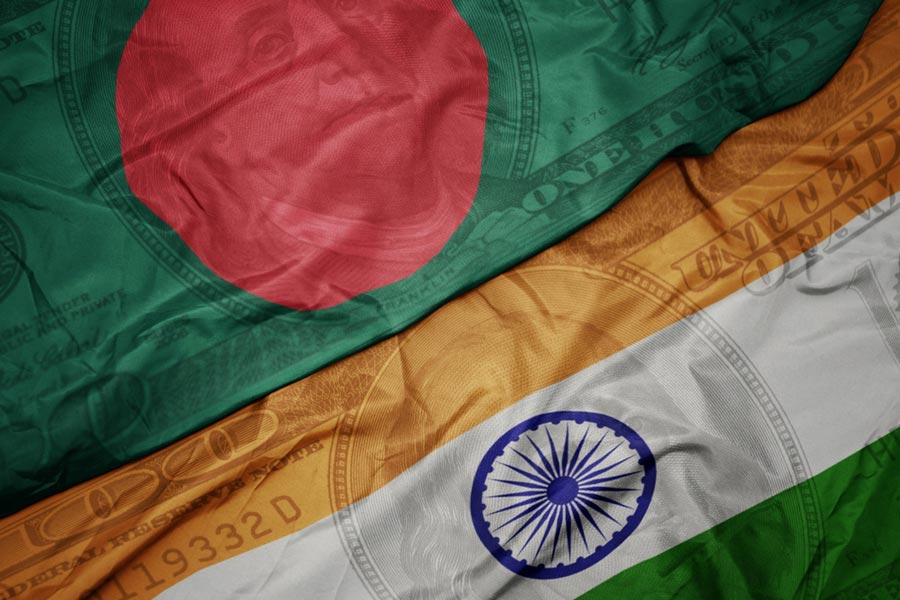Isro’s success in soft landing a lunar module and rover on the dark side of the moon is a budget blockbuster with a difference; it’s playing in outer space, not your neighbouring cinema.
Roscosmos tried to photobomb Isro’s moment by landing Luna 25 on the dark side a few days before Chandrayaan-3. The Russians have form in this matter. In 1969, on the day Neil Armstrong and Buzz Aldrin completed their first moonwalk, Luna 15, designed by the Soviet space programme as an unmanned robotic mission to collect moon rock and get it back to earth before Apollo 11 did, hit a lunar mountain on its way down.
More than fifty years later, Luna 25 had its descent similarly interrupted. The official Russian statement on the mission’s failure is a classic of its kind: “The apparatus moved into an unpredictable orbit and ceased to exist as a result of a collision with the surface of the moon.” It’s almost as if there were two parties to this dispute: the lander and the surface of the moon. The Russians keep trying to crash other people’s space parties and, in a literal sort of way, they keep succeeding.
It tells you something about the decline in Russian capability that Luna 25 was a less ambitious version of Luna 15 in that it was designed merely to land on the moon and do some experiments, not to rise off its surface again and return to earth. The once-pioneering Soviet space programme that gave the world Sputnik, Yuri Gagarin and Salyut, the world’s first space station, has regressed to the point where it can’t manage a soft landing on the moon.
But there is a larger question that India’s success and Russia’s failure raises: what is the point of these missions to the moon?
The Apollo missions were Cold War projects. The Soviet Union’s lead in space flight was unacceptable to the Americans, so John F. Kennedy committed America to landing a man on the moon as a token of that country’s dynamism and virility. Twelve American astronauts walked the surface of the moon and, then, the last three missions of the Apollo programme were cancelled.
The scientific and technological research that the landings made possible was seen as secondary to the political statement that putting a man on the moon had made. In the words of a Nasa administrator: “This was a contest of political ideologies. It was a contest of economic ideologies. It was a contest of technological prowess. And in this great contest of great powers the United States of America was determined to win.” Once it became clear that the Russians couldn’t put a man on the moon, the point had been made and the expense of the Apollo programme became politically unsustainable.
Nasa plans manned missions to the moon sometime this decade and there is talk of exploiting the mineral resources of the moon, of using permafrost ice as a source of water and oxygen with a view to establishing a permanent presence on the moon. The coverage of Chandrayaan-3’s success in the Western press focused on the potential competition for the moon’s natural resources.
The truth is that this renewed interest in moon missions is in large part a response to China’s growing presence in space. China’s ability to land robotic craft on the moon and bring them back to earth, its permanently crewed Tiangong space station, its prowess in rocketry, and the deteriorating relations between the West and China have made lunar exploration a political project again.
Apart from the need of great powers not to appear to lose a technological contest, what is the larger justification for a space programme? The answers used to be curiosity, the quest for knowledge about the origins of the universe, the search for extraterrestrial life, but increasingly, the answers seem to draw upon staples of science fiction: the colonisation of the moon and Mars, the terraforming of planets, and the future of humanity as an extraterrestrial species.
Elon Musk and his company, Space X, are serious players in the space business. If you go to Space X’s website, the page on Mars is subtitled: “The Road to Making Humanity MultiPlanetary”. Musk is not just enthusiastic about colonising other planets; he sees the colonisation of Mars not as a romantic dream but as an imminent possibility. The ambition (or hubris) of Musk’s vision is explicit. This is what he has to say about the colonisation of Mars: “At an average distance of 140 million miles, Mars is one of Earth’s closest habitable neighbors. Mars is about half again as far from the Sun as Earth is, so it still has decent sunlight. It is a little cold, but we can warm it up. Its atmosphere is primarily CO2 with some nitrogen and argon and a few other trace elements, which means that we can grow plants on Mars just by compressing the atmosphere. Gravity on Mars is about 38% of that of Earth, so you would be able to lift heavy things and bound around. Furthermore, the day is remarkably close to that of Earth.”
The casual understatement about Mars “…being a little cold, but we can warm it up” and the throwaway line about compressing the atmosphere to grow plants are both deliberately provocative and deadly serious. Musk might be deluded and wrong but his success in developing the Super Heavy rocket and the Starship spacecraft and Space X’s ongoing relationship with Nasa suggest that he will remain, for some time to come, one of the influential, agenda-setting voices in space exploration.
Musk also happens to be one of a group of tech billionaires like Peter Thiel, Jeff Bezos and Richard Branson who see the expansion of humans into space colonies and other planets as the future of humanity. They tend to subscribe to a view of the future called Longtermism, elaborated by philosophers like William MacAskill, according to which colonising the cosmos ought to be our first priority because it guarantees the survival of the species otherwise threatened by climate change on a single planet.
Whether Musk’s hobby horses ought to shape humanity’s relationship with space is a separate question; the fact is that given his technological prowess and influence, he likely will. Every space programme in the world, including India’s, will have to reckon with the priorities of a US space programme driven by this new class of transnational tycoons and their pet ideas. To land on the moon to demonstrate India’s technological chops, our prowess, is a wonderful thing. But it can’t be its sole rationale. As the country that hosts the largest human population on this planet, we should ask questions that mightn’t occur to great powers and tech billionaires: what is it for? How will it help us flourish on Earth?
mukulkesavan@hotmail.com











